Lately I've had to pinch myself to make sure I'm not dreaming, as I've had the enormously good fortune to listen to a variety of audio equipment that so very closely matches my personal preferences for high-performance audio in terms of musicality and visuospatial attributes.
A rather amazing thing to me, is that for old-timer audio enthusiasts like myself, who grew up with analog sources and vacuum tube amplification components, is that there are now a select few Red Book digital sources and solid-state amplification components that have reached a sort of parity in terms of musicality and visuospatial performance with analog sources & vacuum tube electronics, which is something I didn't think was really possible ten years ago, or so, for example.
That's not to say that analog sources & vacuum tube amplification sound the same as digital sources and solid-state amplification, as they don't.
However, what I find is that the variation of sound quality in terms of musicality and visuospatial performance varies as much within the categories of analog sources and vacuum tube amplification, as it does between the categories of digital sources and solid-state amplification.
So, there are these rather small subsets within those two groups - analog sources & vacuum tube amplification, and digital sources & solid-state amplification - that have achieved a remarkably high level of sound quality in terms of musicality and visuospatial performance that gives them approximately equal levels of musical satisfaction and emotive involvement when listening to recorded media.
Personally, I think that is a very big deal.
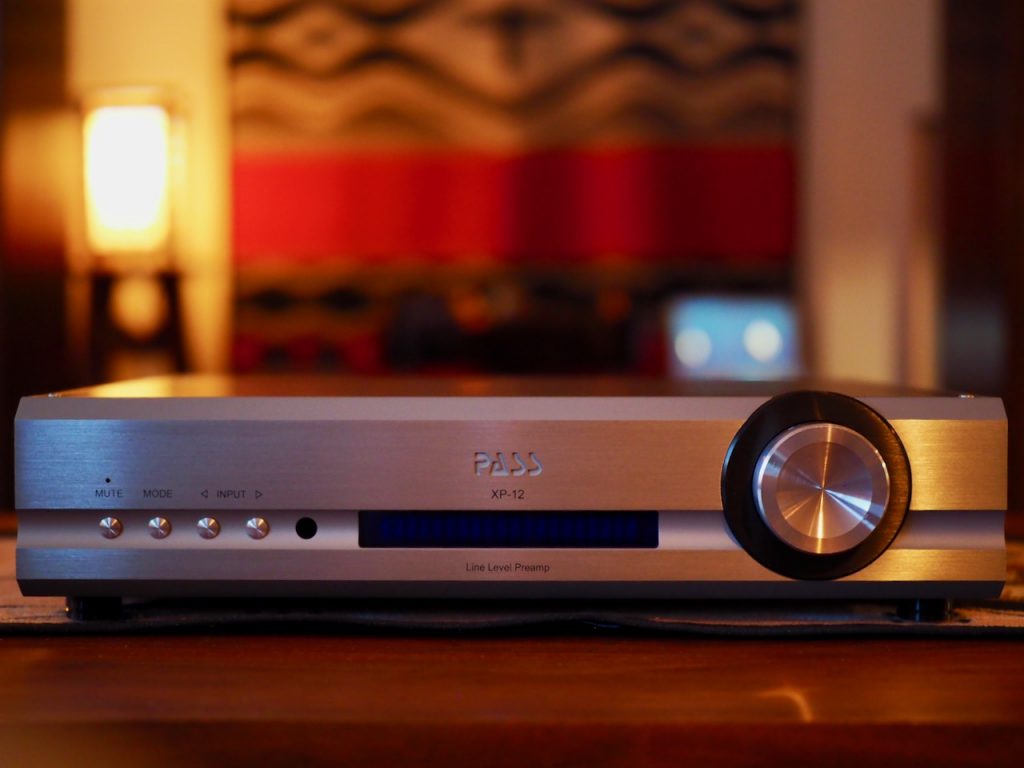
Pass Labs XP-12 preamplifier.
A case in point is the Pass Labs XP-12 preamplifier, which I am in the process of evaluating more closely now that its turn in my review queue has come up, and I am gathering more detailed listening impressions for its upcoming feature review in Positive Feedback.
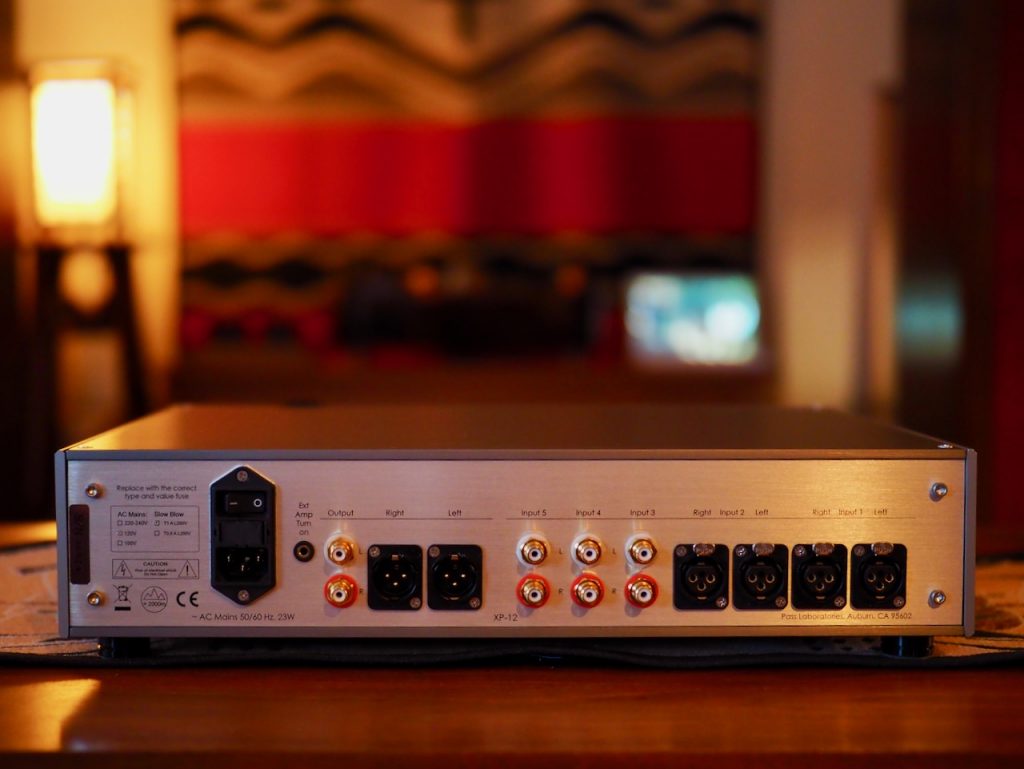
Pass Labs XP-12 line-level preamplifier.
Since its arrival here in January, the Pass Labs XP-12 line-level preamplifier has been getting a thorough run-in my Altec 832A Corona loudspeakers based system, and I have been gleaning insights about it coupled with various amplifiers, like the First Watt SIT-3 stereo amplifier, the Pass Labs XA25 stereo amplifier, and the Leben CS-600 vacuum tube integrated amplifier run in power amplifier mode.

Vintage Altec Corona 832A loudspeakers.
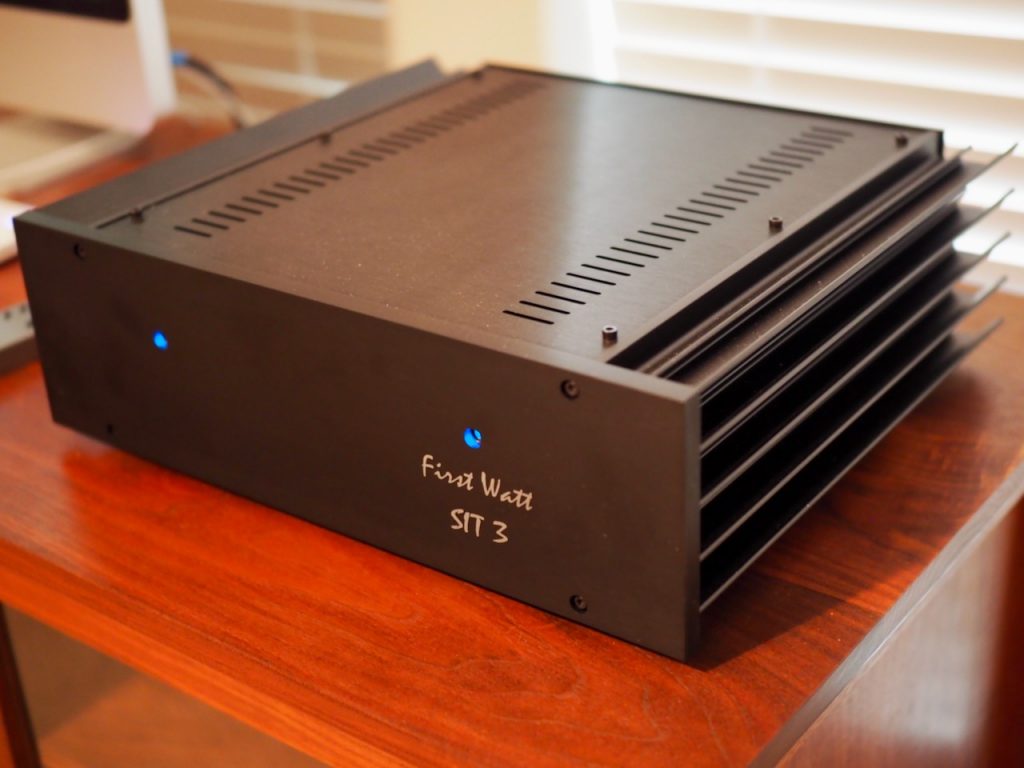
First Watt SIT-3 stereo amplifier with Pass Labs XP-12.
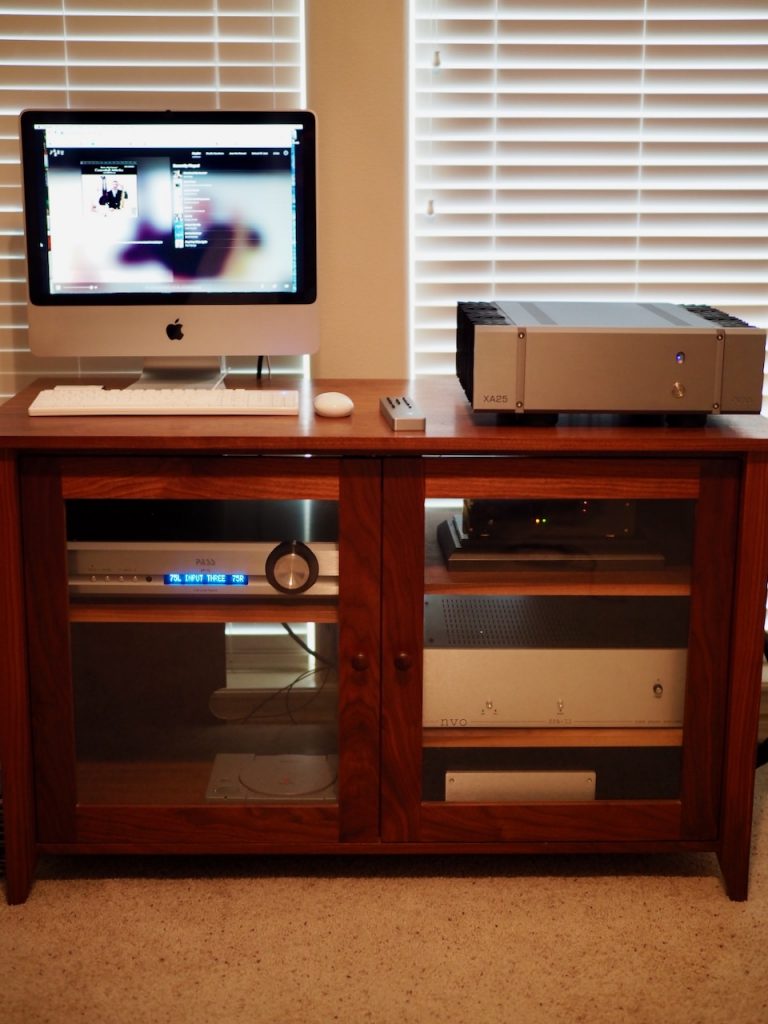
Pass Labs amplification in vintage Altec Corona 832A loudspeakers based system.
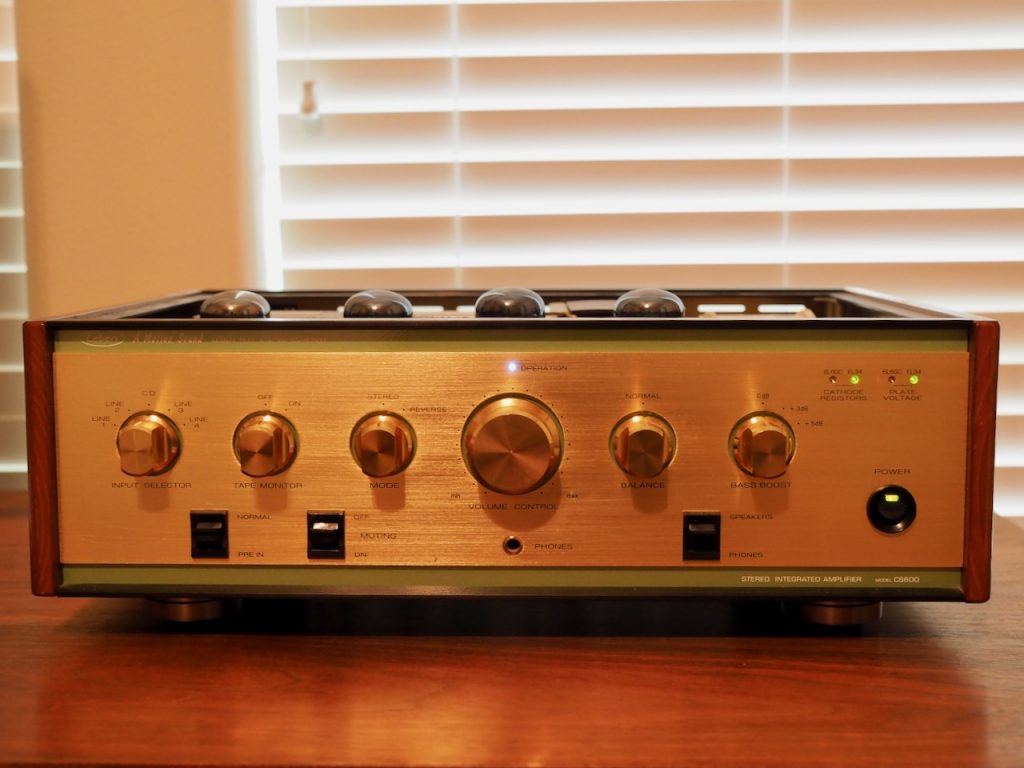
Leben CS600 integrated amplifier with Pass Labs XP-12.
I thoroughly enjoyed what I was hearing from the Pass Labs XP-12 line-level preamplifier in terms of musicality and visuospatial performance in my vintage Altec 832A Corona loudspeakers based system, and I was looking forward to transitioning it to my primary music listening system in my living room to see how well it fared in that context.
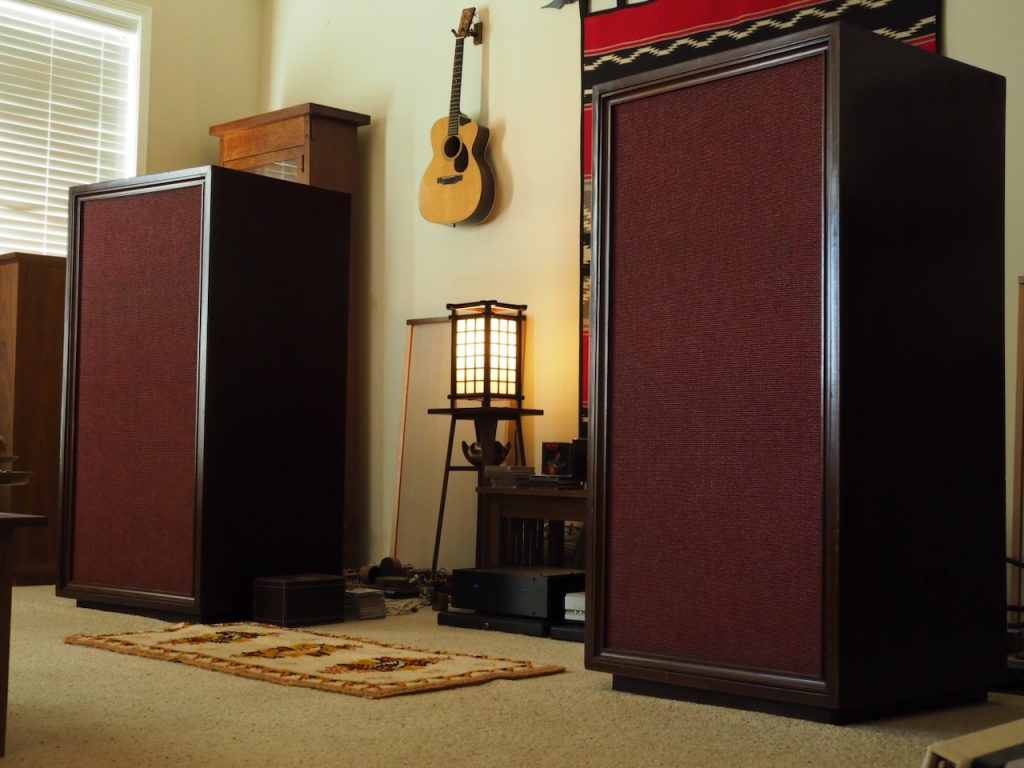
Over the last week or so I transitioned the Pass Labs XP-12 preamplifier into my main music system, which currently consists of the following components:
The Duelund-Altec Project "Stokowski" Altec loudspeakers (above), with their state-of-art - and world's first - Duelund CAST tinned-copper custom crossovers (below), continue to blow my mind every single time I listen to them.
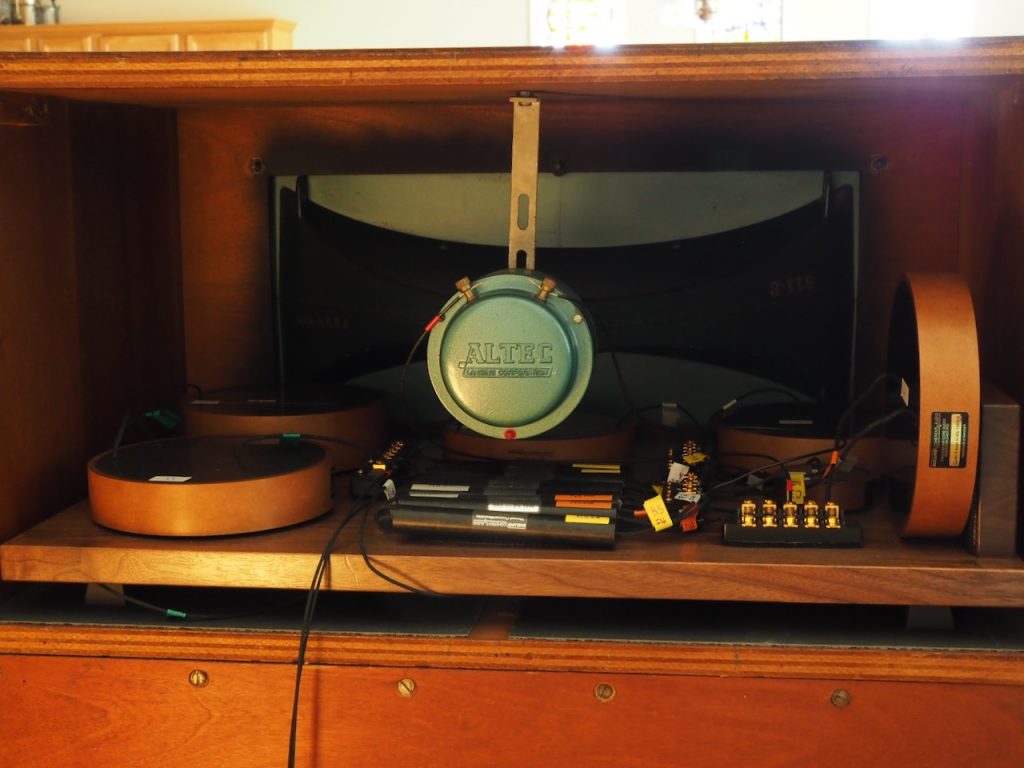
It has been eight months after finishing the Duelund-Altec Project, and my adoration for these loudspeakers grows every time I listen to them.
For my tastes, in terms of musicality and visuospatial performance, I haven't heard any contemporary loudspeakers that even come close to them in terms of the rather unprecedented level of listening satisfaction and emotional impact they are capable of providing during listening sessions.
In my listening sessions I've been using two sources, the first being my CTC Garrard 301, and the second being the Audio Note (UK) CD 2.1x/II Level Two Red Book CD Player (review coming up after the Pass Labs XP-12 line-level preamplifier feature review for Positive Feedback).
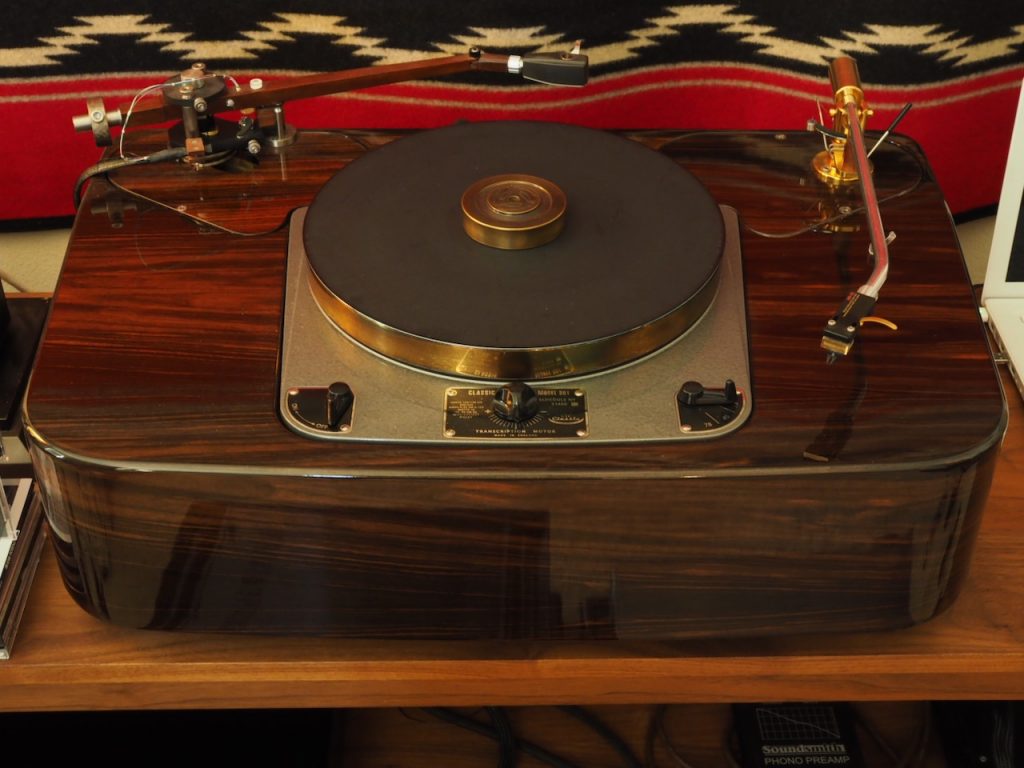
CTC Garrard 301
The CTC Garrard 301 has been faithfully delivering the musical goods for me for years now, and I consider it to be a trustworthy old friend.

Audio Note (UK) CD 2.1x/II Level Two Red Book CD Player
The arrival of the Audio Note (UK) CD 2.1x/II Level Two Red Book CD Player has heralded something I never thought I would hear from Red Book CDs, which is a CD player that delivers a comparable level of listening satisfaction and emotional impact from Red Book CDs as my CTC Garrard 301 does from LPs.
That has not only been a somewhat shocking development for me, but one that is very welcome, and I have been having a ball going through my 1000-plus Red Book CD collection and listening to CDs that I haven't listened to in many years.
I really thought Red Book CDs were incapable of delivering such a high-level of listening satisfaction and emotional impact, and yet the Audio Note (UK) CD 2.1x/II Level Two Red Book CD Player has proved me wrong in that belief, as it really delivers the musical goods in a very satisfying way.
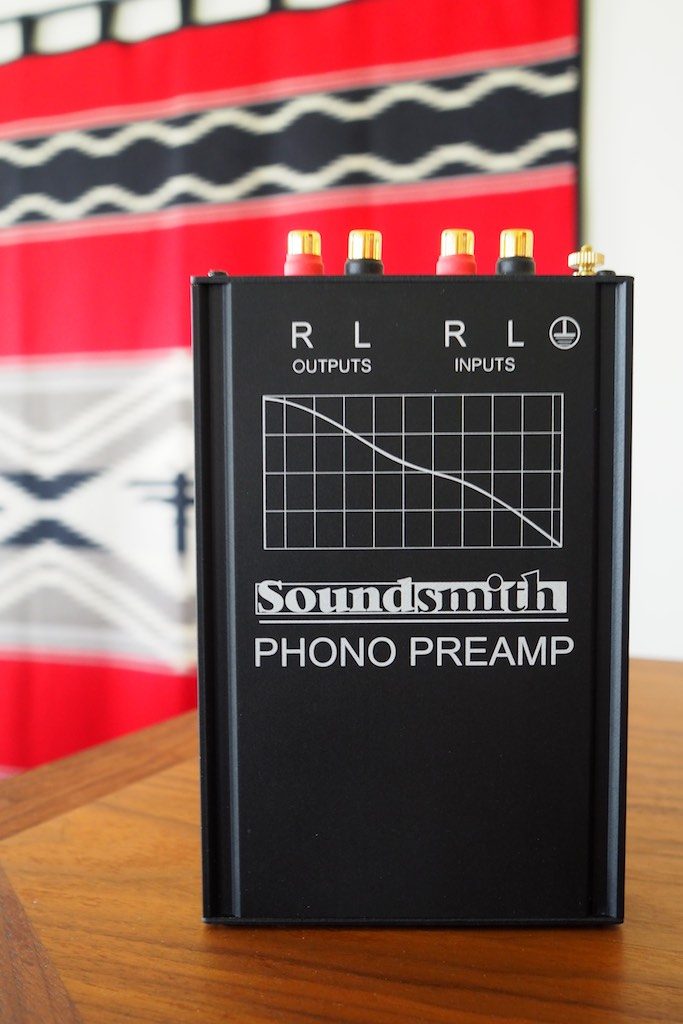
Soundsmith MMP3 phono equalizer
The Pass Labs XP-12 preamplifier is a line-level preamplifier - no phono stage - so I used the superb little Soundsmith MMP3 phono equalizer for phono duties (above, review HERE).
How much do I like the Soundsmith MMP3 phono equalizer? I purchased it after reviewing it, something that only rarely happens these days, as I am so satisfied with the performance of my audio systems.
My Tannoy Westminster Royal SE loudspeakers are great speakers (below), but they take more power to drive them to live-like listening levels than you would expect given their highish sensitivity.
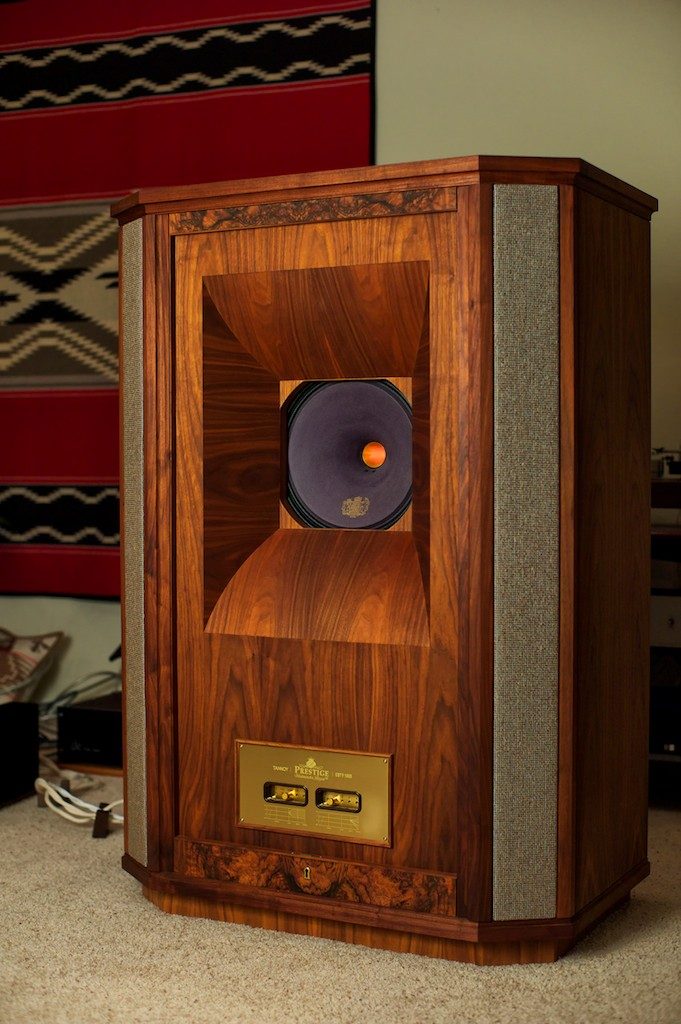
Tannoy Westminster Royal SE loudspeakers.
The First Watt SIT-3 stereo amplifier on my West's sounded amazing (review HERE), but just couldn't quite reach the live-like volume levels I wanted for certain types of music I listen to.
To do that with the West's, I've come to the conclusion that an amplifier really needs to be able to put out about 30 to 60 watts on peaks to maintain live-like volume levels and realistic dynamic performance.
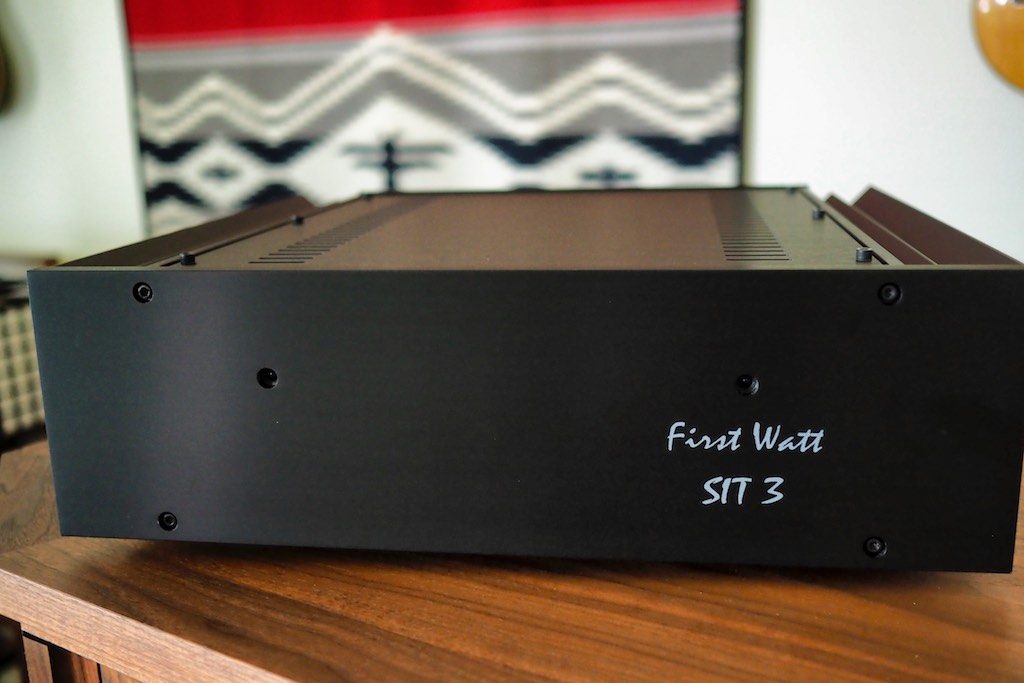
Nelson Pass' First Watt SIT-3 puts out 18 watts into 8 Ohm loudspeakers like my West's, but the power output is halved to 9 watts for my 16 Ohm "Stokowski" Altec loudspeakers, or about the same as a 300B SET amplifier would provide.
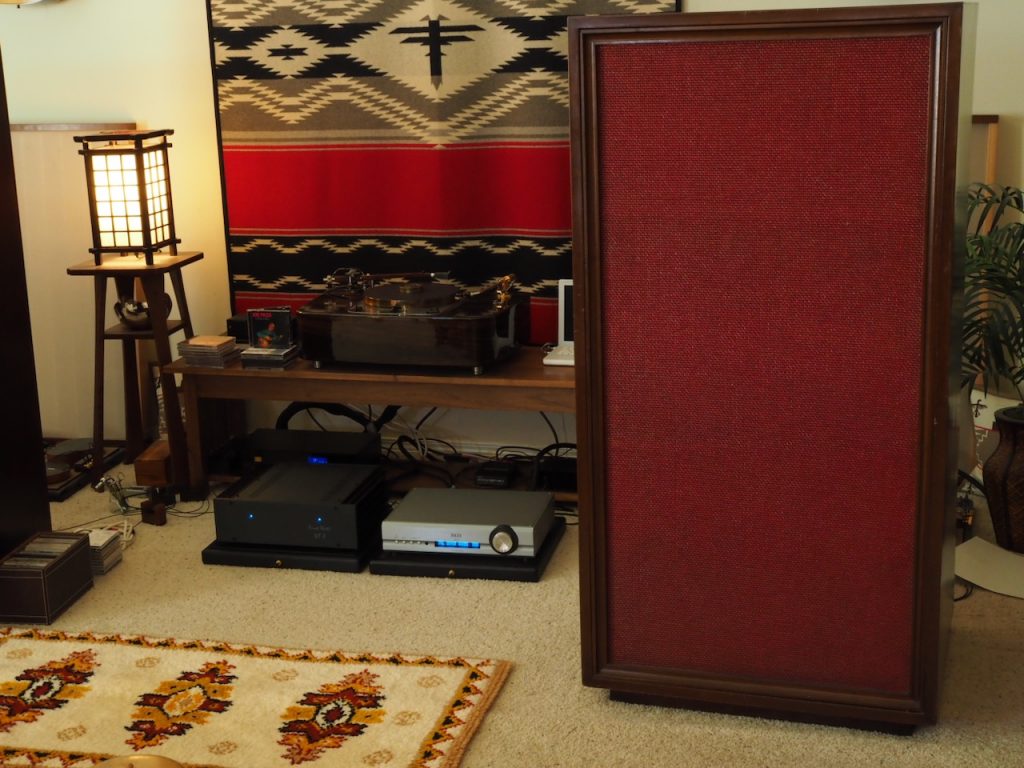
The "Stokowski" Altec loudspeakers high-sensitivity is particularly helpful to me as a reviewer, as they allow me to evaluate amplifiers of low power, say from 2 watts on up to about 30 watts, while still being able to achieve live-like volume levels and dynamics that I think are essential for the realistic reproduction or recorded music.
So now with my Westminster Royal SE loudspeakers and my "Stokowski" Altec loudspeakers, I am able to cover a full range of amplifiers from low to high-powered and really get the very best out of them.

For my "Stokowski" Altec loudspeakers I'm using the Duelund DCA16GA tinned-copper speaker cables. From the First Watt SIT-3 to the Pass Labs XP-12 line-level preamplifier I'm using the new Duelund Dual DCA16GA tinned-copper interconnects terminated with Duelund plastic-free RCAs.
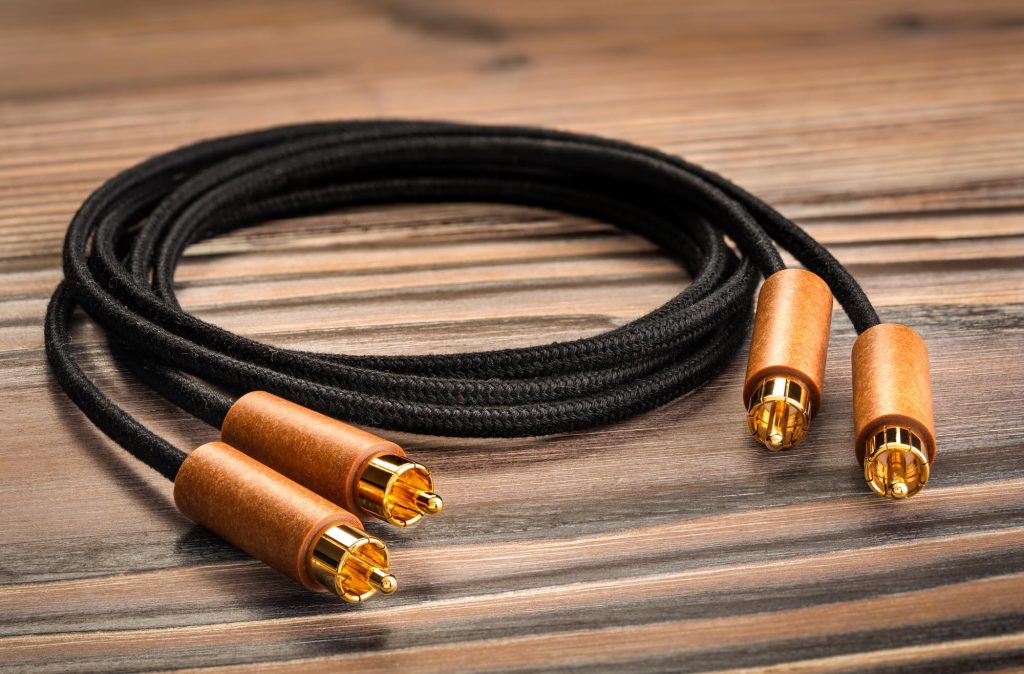
Duelund Dual DCA16GA interconnect photo courtesy of Duelund Coherent Audio.
From the Soundsmith MMP3 phono stage to the Pass Labs XP-12 line-level preamplifier I'm using a Belden 8402 microphone cable interconnect, and from the Audio Note (UK) CD 2.1x/II Level Two Red Book CD Player to the Pass Labs XP-12 line-level preamplifier I'm using Acoustic Revive Absolute FM interconnects.

Belden 8402 microphone cable RCA interconnects.
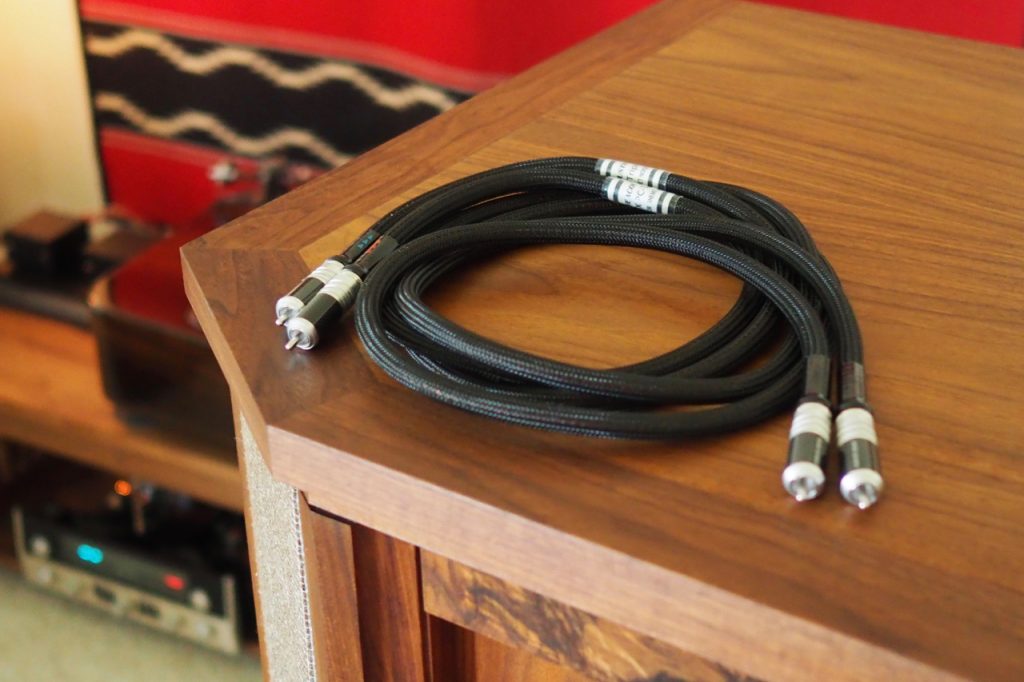
Acoustic Revive Absolute FM interconnects.
For power cables, an Acoustic Revive Absolute Power Cable connects the First Watt SIT-3 to the AC ...
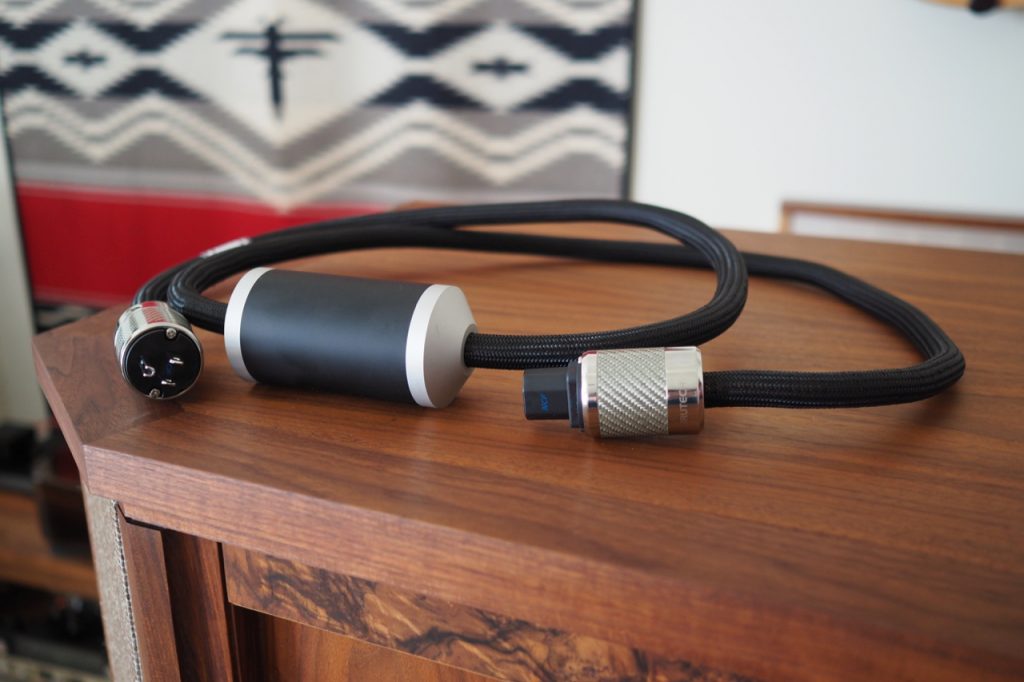
Acoustic Revive Absolute Power Cable
... and an Acoustic Revive Power Reference TripleC NCF AC power cord connects the Pass Labs XP-12 line-level preamplifier to the AC supply ...
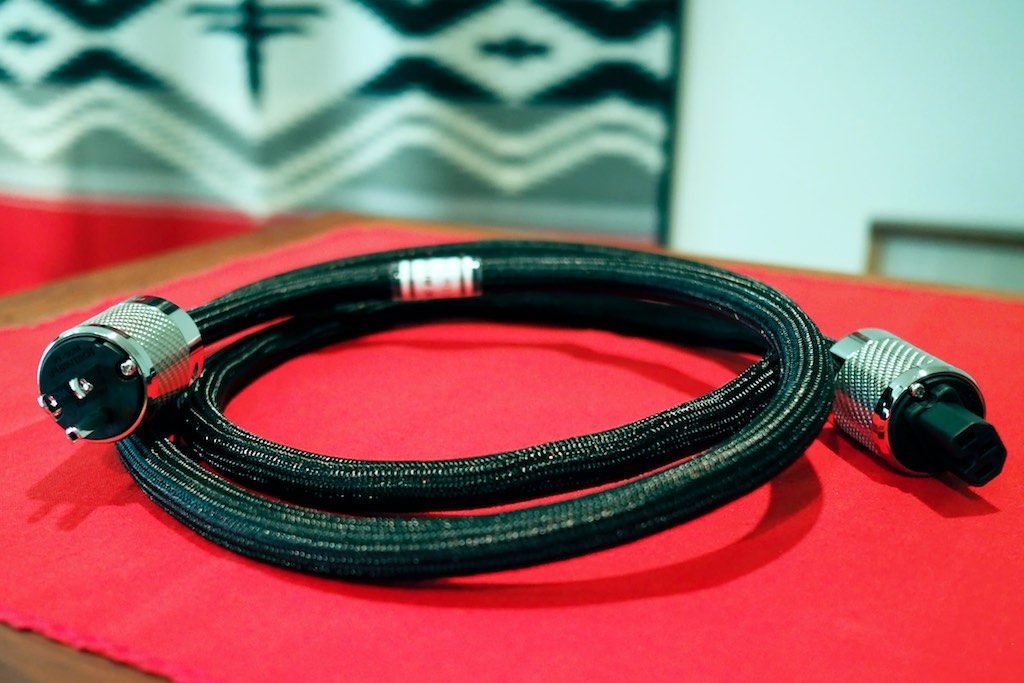
Acoustic Revive Power Reference TripleC NCF AC power cord.
A Sablon Audio Robusto power cord connects the Audio Note (UK) CD 2.1x/II Level Two Red Book CD Player to the AC supply. Sorry, I need to take a new photo of the Robusto, but it looks a lot like the Sablon Audio Quantum Gran Corona power cord in the photo below, but without the Quantum box.
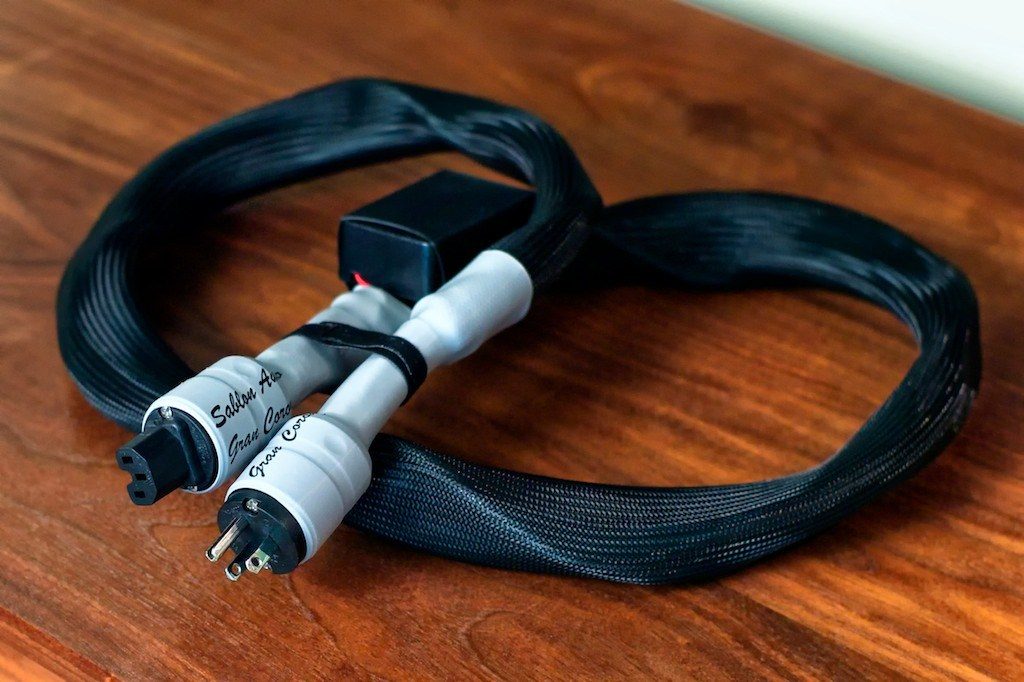
Sablon Audio Quantum Gran Corona.
All of the Acoustic Revive power cords connect to an Acoustic Revive RPT-6 Absolute NCF Power Distributor.

Acoustic Revive Absolute RPT-6 Absolute NCF power distributor.
My wall outlets are fitted with Acoustic Revive customized Oyaide R-1 outlets, Acoustic Revive CB-1DB Receptacle Base Plates, and CFRP-1F Carbon Fiber Outlet Plates.
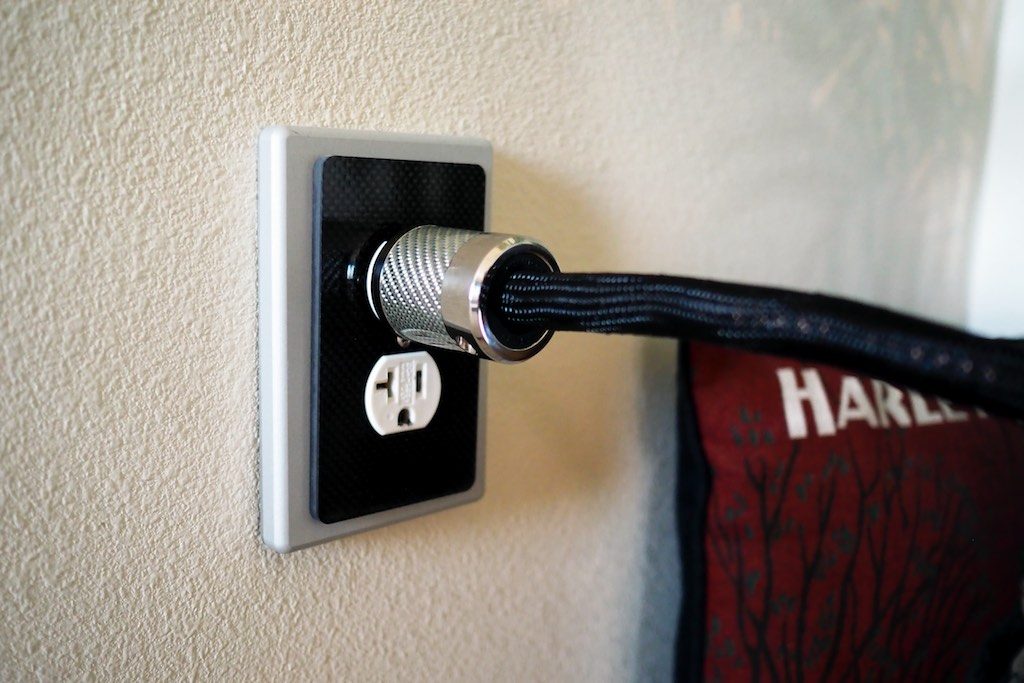
Acoustic Revive wall outlets.
The Acoustic Revive RPT-6 Absolute NCF Power Distributor is connected to my wall AC outlet with another Acoustic Revive Absolute power cable, and the Sablon Audio Robusto power cord plugs directly into the wall outlet. That's the system composition at the moment.

Ok, with all the background information out of the way, let me move on and provide you some listening impressions of the Pass Labs XP-12 line-level preamplifier and First Watt SIT-3 stereo amplifier combination.
You might remember that in my preliminary listening sessions of the Pass Labs XP-12 line-level preamplifier with various amplifiers in my Altec Corona 832a loudspeakers based system, that it provided a tonally natural, rich, somewhat warm, yet transparent view into the music that I found to be very enjoyable, and it revealed that the Pass Labs XP-12 was a very flexible line-level preamplifier, getting the best from both the solid-state and tube amplifiers I tried it with.
After moving the Pass Labs XP-12 line-level preamplifier and the First Watt SIT-3 stereo amplifier into my main listening system with the Duelund-ized "Stokowski" Altec loudspeakers, I started my listening with the Audio Note (UK) CD 2.1x/II Level Two Red Book CD Player.
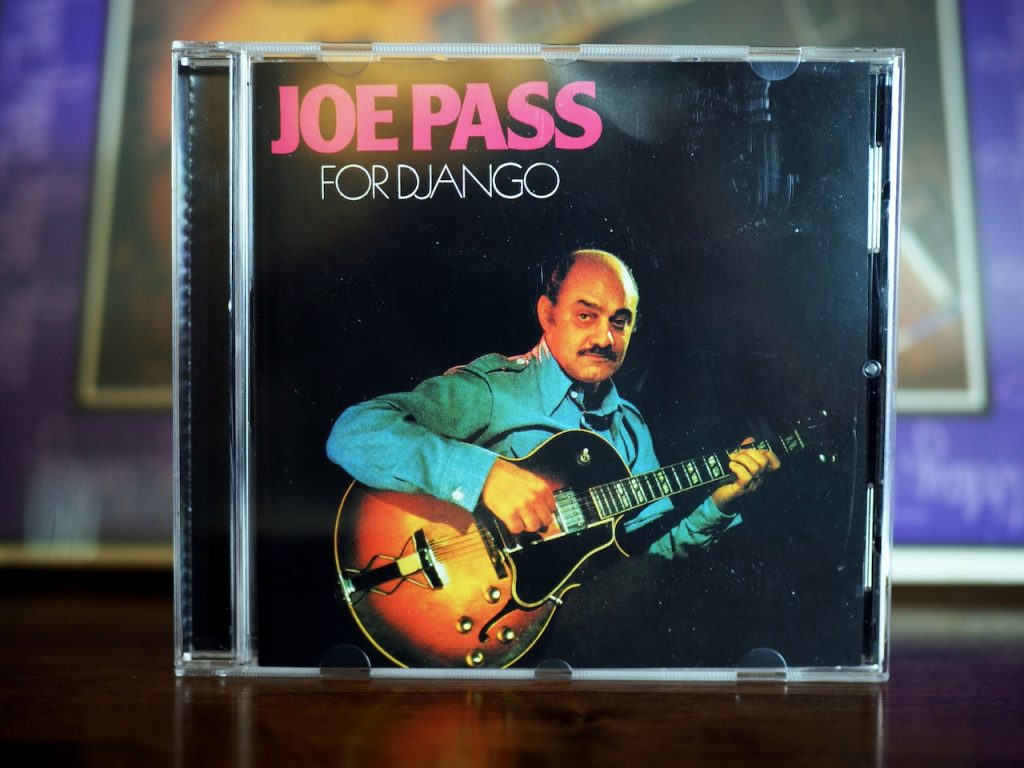
Joe Pass' For Django.
First up for a listen was the classic Django Reinhardt tribute album, For Django, by jazz guitarist Joe Pass, which was recorded at Pacific Jazz Studios in Hollywood in October of 1964. For Django features Joe Pass on guitar, John Pisano on guitar, Jim Hughart on bass, and Colin Bailey on drums.
I've gotten quite familiar with For Django played on the Audio Note (UK) CD 2.1x/II Level Two Red Book CD player in combination with the Audio Note (UK) Oto Phono SE Signature integrated amplifier (review HERE), so I was very interested in how it would perform with the Pass Labs XP-12 preamplifier and First Watt SIT-3 stereo amplifier combination, which would tell me a lot about this solid-state combination's performance.
The First Watt SIT-3 stereo amplifier has about the same amount of power (9 watts) into my Altec loudspeakers as the Oto (10 watts), which is more than enough power to easily drive the highly-sensitive Altec loudspeakers to live-like volume and dynamic levels.
The Pass Labs XP-12 line-level preamplifier combined with the First Watt SIT-3 stereo amplifier in this system is a superb match, and the XP-12's performance is providing me further insights into the SIT-3's prowess.
First of all, given the highly-sensitive nature of the Altec loudspeakers, an important consideration is how quiet the amplification components are, and with the XP-12 and SIT-3 they are absolutely dead quiet, just like the Oto.
Listening to For Django with my "Stokowski" Altec loudspeakers, my overall impressions are similar to what I heard with my Altec 832A Corona loudspeakers, in that the overall sound signature of the pairing was tonally natural, rich, somewhat warm, and transparent.
However, the much higher performance level of the Duelund-ized "Stokowski" Altec loudspeakers took everything to the next level.
Joe Pass' guitar sounded utterly natural in tonality, sublimely beautiful, and the tone colors created by adding additional notes to triads were easily evident as Joe played.
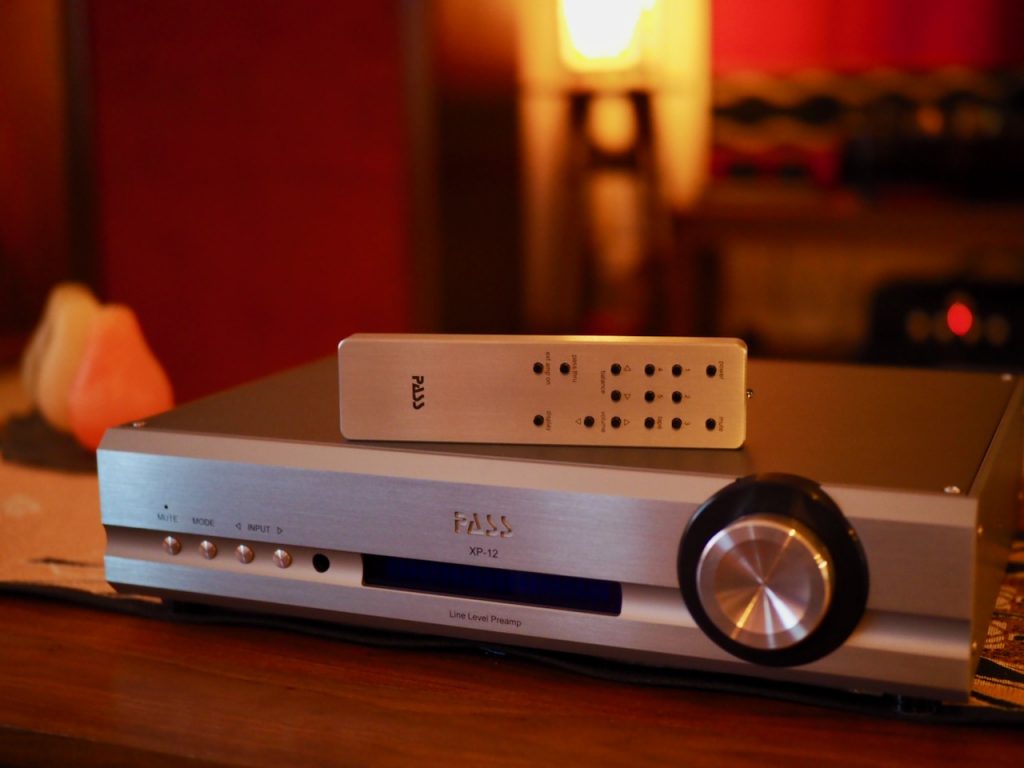
Pass Labs XP-12 preamplifier and remote control.
One thing I really appreciated about the Pass Labs XP-12 line-level preamplifier was its ability to control volume in 1 dB steps, which is really handy in getting live-like volumes dialed-in, and you can do it from the remote too, which is superbly built and usefully functional. For late night listening you can dim or turn off the XP-12's display, which is a nice touch.
I've already mentioned that the timbral realism and the resolution of tone color for the XP-12 and SIT-3 amplification combination are superb, but I want to emphasize the ease at which this combination can play a live-like levels, and the beautiful rendering of dynamics across the spectrum of soft to loud, which really makes For Django come alive.
The importance of dynamic performance in making melodies, beat, and rhythm come alive in the listening room cannot be understated, and the XP-12's and SIT-3's ability to track variations in loudness across the dynamic spectrum with For Django was superb by any measure.
Now let me address the visuospatial performance of the Pass Labs XP-12 line-level preamplifier with the First Watt SIT-3.
Visuospatial performance is related largely to the ability of a component to reproduce the non-musical artifacts of the recording process, like transparency, resolution, soundstage, the ability to convey the acoustic sense of ‘space’ of the recording venue, and imaging.
The Pass Labs XP-12 line-level preamplifier combined with the SIT-3 amplifier is very transparent, and has a high degree of resolution, which allows all those fine nuances of a musical performance to emerge from a very-black no-noise background with ease.
Components that have this high of a degree of resolution often sacrifice natural tonality to accomplish it, but not the XP-12 and SIT-3, which maintain superb tonality while providing a lot of meaningful musical nuance that makes listening to music even more rewarding.
The XP-12 and SIT-3 are definitely not your usual analytical, dry, amusical sounding amplification components, as they possess natural tonality, a beautifully liquid and flowing presentation of tempos that makes their speed easily discernable, treble & bass accompaniments to the melody (harmony) that sound naturally integrated in a holistic fashion, and make it obvious why For Django is such a revered Joe Pass album.
Imaging on For Django was superb, with vivid flesh & blood images emerging from a pitch-black soundstage. The images were life-like in size, were spread across a wide and voluminous soundstage, and there was lots of depth layering into the soundstage, with each of the musicians having their own easily defined space in a 3D soundstage.
The Pass Labs XP-12 line-level preamplifier is impressive. The XP-12 has a superb build quality, its remote control is a joy to use and very useful, it is affordable for a high-performance preamplifier, it is versatile in accommodating a range of amplifiers differing in their overall voicing, and its musicality and visuospatial performance is world-class, which makes it a joy to listen to music with. If you have a First Watt SIT-3 I can also safely say that the Pass Labs XP-12 line-level preamplifier is a superb match to the SIT-3.
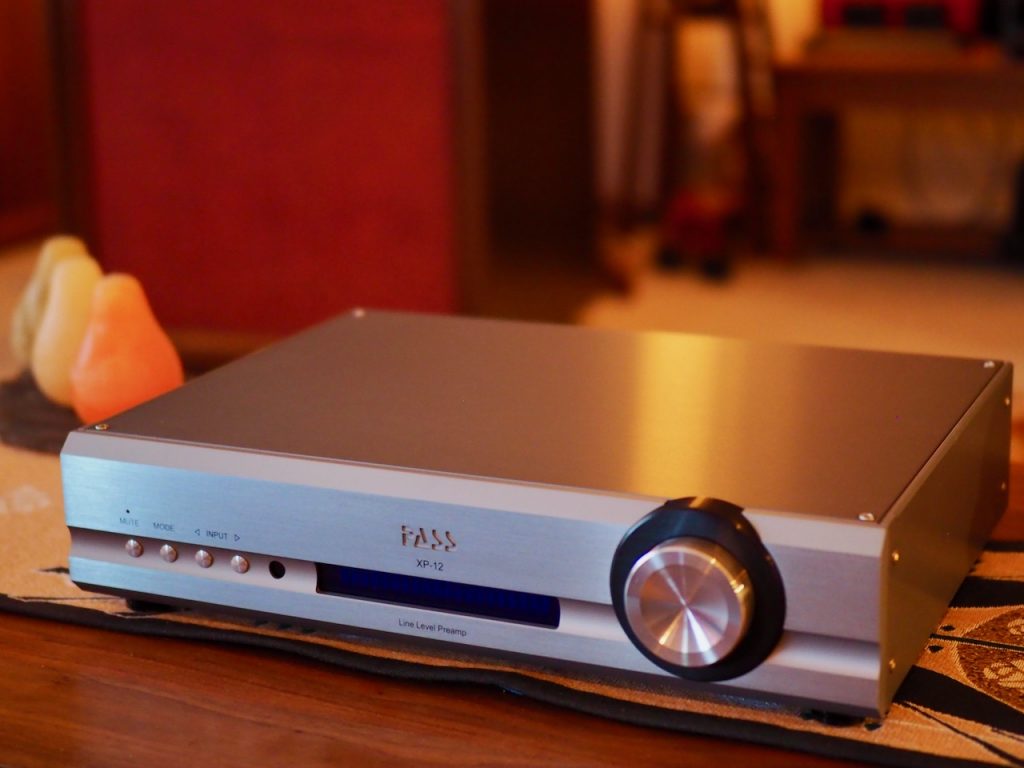
Pass Labs XP-12 preamplifier.
Ok, that's it for now for some initial listening impressions, as I am inspired by my listening session to go and try to play a little jazz on my guitar for a while.
Next up I'll give you some impressions of listening to some vinyl, and we'll see how well the Pass Labs XP-12 line-level preamplifier fares with that.
Much more to come!
As always, thanks for stopping by, and may the tone be with you!



























